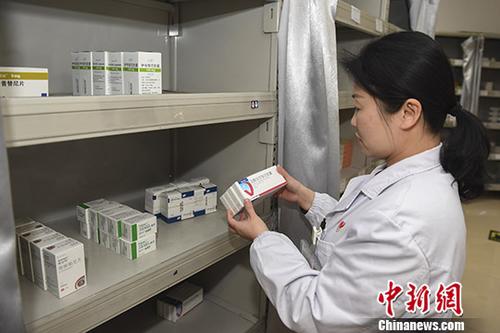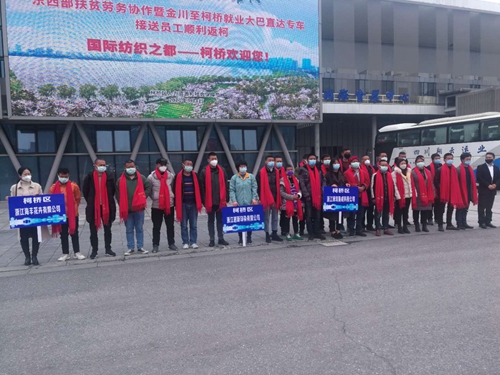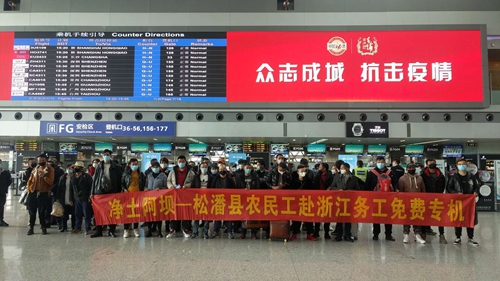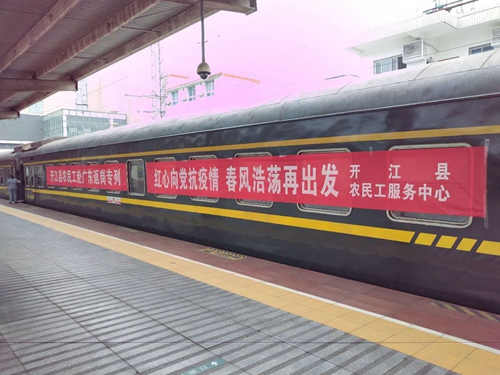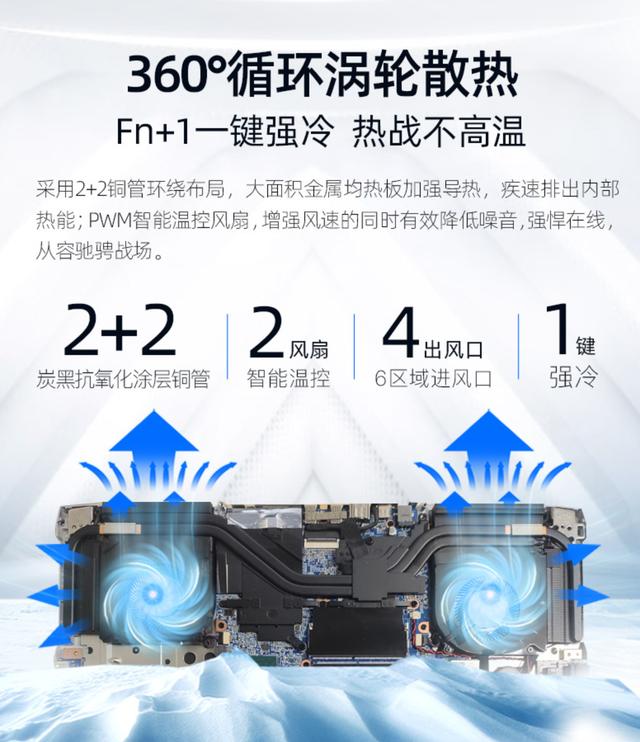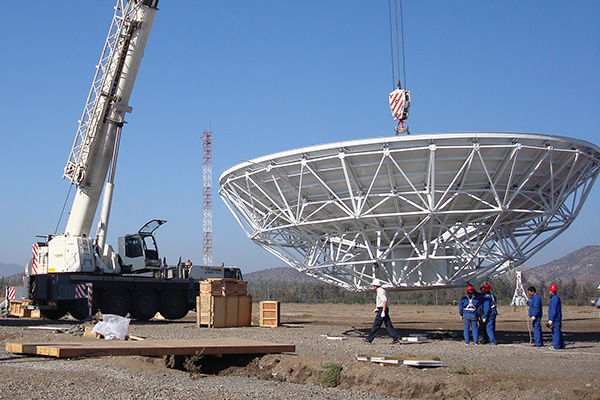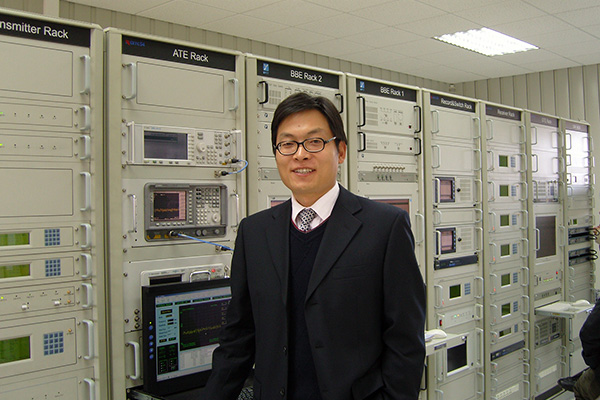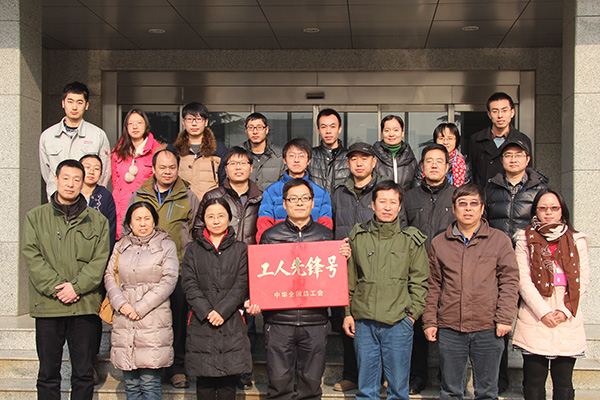Jing Zheng Fa [2023] No.22
District People’s governments, municipal government commissions, offices and bureaus, and municipal institutions:
The Emergency Plan for Heavy Air Pollution in Beijing (revised in 2023) is hereby printed and distributed to you, please earnestly organize and implement it according to the actual situation.
the people’s government of beijing city
October 22, 2023
(This piece is publicly released)
Emergency Plan for Heavy Air Pollution in Beijing (revised in 2023)
catalogue
1 General rules
1.1 Purpose and basis of compilation
1.2 Scope of application
1.3 emergency plan system
2 Organization and responsibilities
2.1 Heavy air pollution in emergency headquarters and its offices.
2.2 emergency headquarters member units with heavy air pollution.
3 early warning
3.1 Early warning classification
3.2 Early warning release
4 Early warning response
4.1 Response classification
4.2 Command and dispatch
4.3 Response measures
4.4 Response Termination
5 summary evaluation
6 emergency support
6.1 Monitoring and forecasting capability guarantee
6.2 Supporting measures to ensure
6.3 Measures to implement the guarantee
6.4 emergency duty
6.5 publicity and guidance
6.6 Public supervision
7 Plan management
7.1 Plan formulation and revision
7.2 Plan implementation
Attachment: 1. List of emergency headquarters members with heavy air pollution in Beijing.
2. List of members of emergency headquarters Office of Beijing Heavy Air Pollution.
3. Heavy air pollution in Beijing, emergency headquarters and office responsibilities.
4. Responsibilities of emergency headquarters member units with heavy air pollution in Beijing.
1 General rules
1.1 Purpose and basis of compilation
In order to further improve the emergency mechanism of heavy air pollution, effectively slow down the pollution level, protect public health, and adhere to scientific, accurate and legal pollution control, according to the People’s Republic of China (PRC) Air Pollution Prevention Law, Beijing Air Pollution Prevention Regulations and other laws, regulations and documents, in accordance with the unified requirements of the Ministry of Ecology and Environment, combined with the actual situation of this city, on the basis of improving the Beijing Emergency Plan for Heavy Air Pollution (revised in 2018), Beijing is formulated.
1.2 Scope of application
This plan is applicable to the emergency work of forecasting the possible occurrence of heavy pollution weather within the administrative area of Beijing.
Timely release health protection tips for short-term heavy pollution that does not meet the early warning start-up conditions or heavy air pollution caused by ozone. Heavy air pollution caused by dust storms shall be implemented in accordance with the Emergency Plan for Sandstorm Weather in Beijing (revised in 2022).
1.3 emergency plan system
The emergency plan for heavy air pollution in this city includes three levels: city, district and street (township). The municipal emergency plan includes this plan, and the emergency sub-plan or implementation plan formulated by the relevant departments and units of the city; District-level emergency plans include emergency plans or implementation plans for heavy air pollution formulated by district governments (including Beijing Economic and Technological Development Zone Administrative Committee, the same below) and relevant district departments and units; Street (township) emergency plans include emergency plans or work measures for heavy air pollution formulated by street offices (township governments) and enterprises and construction sites under their jurisdiction.
2 Organization and responsibilities
2.1 Heavy air pollution in emergency headquarters and its offices.
The Municipal Emergency Committee (hereinafter referred to as the Municipal Emergency Committee) consists of the emergency headquarters (hereinafter referred to as the Headquarters) with heavy air pollution, and works under the unified leadership of the Municipal Emergency Committee. The commander-in-chief of the headquarters is the executive deputy mayor of the municipal government, the deputy commander-in-chief is the deputy mayor and deputy secretary-general of the municipal government in charge of ecological environment work, and the executive deputy commander-in-chief is the director of the Municipal Bureau of Ecological Environment; The headquarters office is located in the Municipal Bureau of Ecology and Environment, and the director of the office is the director of the Municipal Bureau of Ecology and Environment. See Annexes 1, 2 and 3 for the list of members of the headquarters, the list of members of the headquarters office, and the responsibilities of the headquarters and office.
2.2 emergency headquarters member units with heavy air pollution.
The members of the headquarters are composed of the Propaganda Department of the Municipal Party Committee, the Supervision Office of the Municipal Government, the Municipal Education Commission, the Municipal Economic and Information Bureau, the Municipal Bureau of Ecology and Environment, the Municipal Housing and Urban-Rural Development Committee, the Municipal Urban Management Committee, the Municipal Traffic Commission, the Municipal Water Affairs Bureau, the Municipal Health and Wellness Committee, the Municipal State-owned Assets Supervision and Administration Commission, the Municipal Landscaping Bureau, the Municipal Bureau of Organs Affairs, the Public Security Management Corps of the Municipal Public Security Bureau (the Municipal Fireworks Office), the Public Security Traffic Management Bureau of the Municipal Public Security Bureau, the Municipal Urban Management See Annex 4 for the division of responsibilities of each member unit.
3 early warning
3.1 Early warning classification
According to the classification method of Technical Regulation of Ambient Air Quality Index (AQI) (Trial) (HJ633—2012), according to the relevant regulations of the Ministry of Ecology and Environment on the unified adjustment of early warning starting standards in key areas, and based on the air quality prediction results, the early warning of heavy air pollution is divided into three levels, from light to heavy, namely yellow warning, orange warning and red warning.
(1) Yellow warning: when it is predicted that the daily average value of the city’s air quality index is > 200 or > 150 for 48 hours or more, and the high-level warning conditions are not met.
(2) orange warning: when it is predicted that the daily average value of the city’s air quality index > 200 lasts for 48 hours or the daily average value > 150 lasts for 72 hours or more, and the high-level warning conditions are not met.
(3) Red Warning: It is predicted that the daily average value of the city’s air quality index > 200 lasts for 72 hours and the daily average value > 300 lasts for 24 hours or more.
When the Ministry of Ecology and Environment uniformly adjusts the start-up standard of early warning of heavy air pollution, it shall be implemented according to the new start-up standard.
3.2 Early warning release
3.2.1 Early warning started
The red and orange warning shall be put forward by the headquarters office to the municipal emergency office, and the municipal emergency office shall report to the director of the municipal emergency Committee and the commander-in-chief of the headquarters for approval and then organize the release, and the headquarters office shall issue the instructions on early warning and response measures. The yellow warning shall be approved by the director of the headquarters office, and the headquarters office shall organize the release and issue instructions on early warning and response measures. In principle, early warning instructions are issued 24 hours in advance.
The headquarters office, the Propaganda Department of the Municipal Party Committee and the Municipal Emergency Early Warning Information Release Center timely release early warning information through television, radio, newspapers, internet, mobile phones and other channels, so as to facilitate the public to know the early warning situation in time and strengthen their own health protection.
3.2.2 Early warning adjustment and cancellation
The headquarters office can put forward early warning adjustment suggestions according to the change of pollution degree and the latest forecast results, and raise or lower the early warning level in a timely manner after being submitted for approval according to the early warning start-up procedure.
When predicting or monitoring the improvement of air quality to below the corresponding level of early warning start-up standard, or receiving the information of regional emergency linkage early warning released by the Ministry of Ecology and Environment, the early warning will be lifted or the early warning level will be lowered. When the early warning is lifted on schedule, it will not be submitted for approval separately, and the command office will directly issue a lifting instruction.
3.2.3 Regional emergency response
Upon receiving the warning message of regional emergency linkage issued by the Ministry of Ecology and Environment, the corresponding level of early warning shall be started in time according to the requirements and procedures to carry out regional emergency linkage.
4 Early warning response
4.1 Response classification
Graded response is implemented in heavily polluted weather, corresponding to the early warning grading, and the early warning response is divided into three grades, from low to high, namely, tertiary response, secondary response and primary response.
(1) When a yellow warning is issued, a three-level response is started.
(2) When the orange warning is issued, the secondary response is started.
(3) When a red warning is issued, the first-level response is started.
4.2 Command and dispatch
(1) When a yellow warning is issued, the director of the headquarters office or the executive deputy director shall organize command and dispatch according to the needs of emergency response, and deploy emergency response to heavy air pollution.
(2) When an orange warning is issued, the commander-in-chief or deputy commander-in-chief of the headquarters shall organize command and dispatch according to the needs of emergency response and deploy emergency response to heavy air pollution.
(3) When a red warning is issued, the commander-in-chief or deputy commander-in-chief of the headquarters shall organize command and dispatch according to the needs of emergency response and deploy emergency response to heavy air pollution. When necessary, the director of the Municipal Emergency Committee shall command and dispatch.
4.3 Response measures
After receiving the instruction of early warning and response measures, all members of the headquarters should immediately organize the response work, notify the relevant enterprises and construction sites as soon as possible, and supervise and inspect at the same time to ensure the effective implementation of various emergency emission reduction measures.
4.3.1 Yellow Warning (Level 3 Response)
(1) Health protection and guidance measures
① Children, the elderly and patients with respiratory tract, cardiovascular and cerebrovascular diseases and other chronic diseases should stay indoors as far as possible and avoid outdoor activities.
② Primary and secondary schools, secondary vocational schools and kindergartens should reduce outdoor activities in a timely manner according to the local air pollution situation.
(3) The departments of ecological environment, sanitation and health, education and district governments should strengthen the publicity of popular science knowledge on emergency response to heavy air pollution and health protection according to the requirements of industry and territorial management.
(2) Initiative emission reduction measures
① The public should travel by public transport as much as possible to reduce the number of motor vehicles on the road; Turn off the engine in time when parking, so as to reduce the idle running time of the vehicle.
(2) increase the dust control measures for construction sites, exposed ground, material stacking and other places.
③ Strengthen road cleaning and reduce road dust pollution.
④ No open-air barbecue.
⑤ Reduce the use of solvent-based coatings, adhesives, cleaning agents, inks and other solvent-based raw and auxiliary materials and products containing volatile organic compounds.
(3) Mandatory emission reduction measures
On the premise of ensuring the normal operation of the city:
(1) on the basis of routine work, the key roads are cleaned once a day or more.
(2) The construction site shall stop outdoor painting, slope protection and shotcrete, building demolition, cutting, earthwork, anti-corrosion of road facilities, asphalt pavement and other construction operations according to the performance classification.
③ Enterprises included in the emergency emission reduction list during the yellow warning period of heavy air pollution shall implement differentiated emission reduction measures according to the performance classification of key industries in heavy polluted weather.
4.3.2 orange warning (secondary response)
(1) Health protection and guidance measures
① Children, the elderly and patients with respiratory tract, cardiovascular and cerebrovascular diseases and other chronic diseases should stay indoors as far as possible and avoid outdoor activities; The general population reduces outdoor activities.
② Primary and secondary schools, secondary vocational schools and kindergartens should reduce or stop outdoor activities in due course according to the air pollution situation in their territories.
③ Medical and health institutions should strengthen the protection propaganda and medical guidance for patients with respiratory diseases.
(2) Initiative emission reduction measures
① The public should travel by public transport as much as possible to reduce the number of motor vehicles on the road; Turn off the engine in time when parking, so as to reduce the idle running time of the vehicle.
② Enterprises should arrange transportation reasonably, reduce the use of heavy-duty fuel (gas) trucks, and try to use national six or pure electric and hydrogen fuel cell vehicles for transportation.
(3) Strengthen dust control measures on construction sites, bare ground, material stacking and other places.
(4) Strengthen road cleaning and reduce road dust pollution.
⑤ Minimize the use of solvent-based coatings, adhesives, cleaning agents, inks and other solvent-based raw and auxiliary materials and products containing volatile organic compounds.
⑥ Enterprises and institutions can shift their peak hours to and from work according to air pollution.
(3) Mandatory emission reduction measures
On the premise of ensuring the normal operation of the city:
(1) on the basis of routine work, the key roads are cleaned once a day or more.
(2) According to the performance classification, the construction site will stop outdoor painting, slope protection and shotcrete, building demolition, cutting, earthwork, road facilities anticorrosion, road asphalt pavement and other construction operations, and stop using non-road mobile machinery (except pure electric and hydrogen fuel cell machinery).
(3) On the basis of the implementation of regional traffic restriction measures during the peak hours of working days, light gasoline vehicles (including driving school coaches) with national emission standards 1 and 2 are prohibited from driving on the road.
(4) construction waste, muck, gravel transport vehicles are prohibited from driving on the road (except pure electric and hydrogen fuel cell vehicles).
⑤ The national four emission standard diesel trucks with license plates (including temporary license plates) issued by this Municipality stop driving on the road (except those confirmed by relevant administrative departments to ensure the transportation of production and living materials in this Municipality and the whole vehicle to transport fresh agricultural products).
⑥ For enterprises included in the emergency emission reduction list during the orange warning period of heavy air pollution, stop using off-road mobile machinery (except pure electric and hydrogen fuel cell machinery), and implement differentiated emission reduction measures according to the performance classification of key industries in heavy polluted weather.
⑦ Fireworks and firecrackers and open-air barbecues are prohibited.
4.3.3 Red Warning (Level 1 Response)
(1) Health protection and guidance measures
① Children, the elderly and patients with respiratory tract, cardiovascular and cerebrovascular diseases and other chronic diseases should stay indoors as far as possible and avoid outdoor activities; The general population tries to avoid outdoor activities.
(2) outdoor duty, homework and other personnel to do health protection measures.
③ Primary and secondary schools, secondary vocational schools and kindergartens should stop outdoor activities in due course according to the air pollution situation in their territories.
(4) medical and health institutions organize experts to carry out health protection consultation and explain protection knowledge, and strengthen emergency duty and medical support for patients with related diseases.
(2) Initiative emission reduction measures
① The public should travel by public transport as much as possible to reduce the number of motor vehicles on the road; Turn off the engine in time when parking, so as to reduce the idle running time of the vehicle.
② Enterprises should arrange transportation reasonably, reduce the use of heavy-duty fuel (gas) trucks, and try to use national six or pure electric and hydrogen fuel cell vehicles for transportation.
(3) Strengthen dust control measures on construction sites, bare ground, material stacking and other places.
(4) Strengthen road cleaning and reduce road dust pollution.
⑤ Air pollutant discharge units will further improve the efficiency of air pollution control facilities on the basis of ensuring discharge standards.
⑥ Minimize the use of solvent-based coatings, adhesives, cleaning agents, inks and other solvent-based raw and auxiliary materials and products containing volatile organic compounds.
⑦ Enterprises and institutions can adopt flexible working methods such as off-peak commuting, off-duty and telecommuting according to air pollution.
(3) Mandatory emission reduction measures
On the premise of ensuring the normal operation of the city:
(1) on the basis of routine work, the key roads are cleaned once a day or more.
(2) According to the performance classification, the construction site will stop outdoor painting, slope protection and shotcrete, building demolition, cutting, earthwork, road facilities anticorrosion, road asphalt pavement and other construction operations, and stop using non-road mobile machinery (except pure electric and hydrogen fuel cell machinery).
(3) Light gasoline vehicles (including driving school coaches) with national emission standards 1 and 2 are prohibited from driving on the road; Motor vehicles with emission standards of Grade III and above (including driving school coaches) run at odd and even numbers (except pure electric and hydrogen fuel cell vehicles), of which the official vehicles in this city will stop driving on the basis of odd and even numbers, and then 30% of the total number of vehicles will be stopped.
(4) construction waste, muck, gravel transport vehicles are prohibited from driving on the road (except pure electric and hydrogen fuel cell vehicles).
⑤ The national four emission standard diesel trucks with license plates (including temporary license plates) issued by this Municipality stop driving on the road (except those confirmed by relevant administrative departments to ensure the transportation of production and living materials in this Municipality and the whole vehicle to transport fresh agricultural products).
⑥ For enterprises included in the emergency emission reduction list during the red warning period of heavy air pollution, stop using off-road mobile machinery (except pure electric and hydrogen fuel cell machinery), and implement differentiated emission reduction measures according to the performance classification of key industries in heavy polluted weather.
⑦ Fireworks and firecrackers and open-air barbecues are prohibited.
⑧ Coordinate and increase the power transfer to reduce the power generation load in this city.
4.4 Response Termination
The response is terminated when the early warning is lifted.
5 summary evaluation
After the response is terminated, all members of the headquarters shall submit a summary of the implementation of emergency measures in their respective industries and areas to the headquarters office in a timely manner. The headquarters office organizes summary and evaluation work as appropriate.
6 emergency support
6.1 Monitoring and forecasting capability guarantee
The Municipal Bureau of Ecology and Environment and the Municipal Meteorological Bureau will hold daily air quality consultation meetings, and increase the frequency of consultation meetings according to the air quality forecast. Strengthen the capacity building of air quality forecasting and early warning, forecast the results accurately and accurately, and continuously improve the monitoring and forecasting level.
6.2 Supporting measures to ensure
Develop and update the list. The implementation of inventory emergency management, the competent departments of various industries should organize the formulation of emergency emission reduction lists and lists for safeguarding people’s livelihood, the normal operation of the city and major events during the early warning of heavy air pollution, and report them to the municipal government for approval before implementation, and update them regularly, and report them to the headquarters office for the record.
Accurately implement emergency emission reduction measures. While implementing the relevant national performance rating documents, the Municipal Bureau of Ecology and Environment, the Municipal Housing and Urban-Rural Construction Committee and other departments should, in combination with the actual situation of this Municipality, jointly formulate and improve the performance rating requirements of enterprises, construction sites and other industries in this Municipality. Departments in charge of various industries shall, in accordance with the performance rating requirements, organize enterprises and construction sites in the industry to carry out performance rating work; The performance rating results shall be dynamically adjusted, and those that do not meet the performance rating requirements shall be downgraded in time. At the same time, urge enterprises listed in the emergency emission reduction list to formulate emergency plans according to the principle of "one factory, one policy", clarify emergency emission reduction measures under different levels of early warning, and implement them in detail in specific production lines, production links and production facilities to ensure operability, monitoring and verification.
6.3 Measures to implement the guarantee
All members of the headquarters should strengthen the law enforcement inspection of the implementation of emergency measures during the early warning period, and find illegal acts and deal with them severely according to law. Each street (township) should strengthen the function of territorial supervision, organize law enforcement forces in the jurisdiction, carry out on-site law enforcement inspections in a targeted manner, and promptly urge rectification or punishment according to law when problems are found. The municipal government supervision office and the Municipal Bureau of Ecology and Environment should strengthen the supervision and inspection of the implementation of emergency measures. If the emergency measures are not effectively implemented due to ineffective work, low efficiency, absence of performance, etc., the relevant units and personnel shall be investigated for responsibility according to relevant regulations.
6.4 emergency duty
All members of the headquarters should improve the emergency duty system combining daily and emergency to ensure the smooth operation of the emergency duty system. When the yellow warning is issued, all member units should keep ready for duty; When the orange warning is issued, all member units should strengthen on-the-job duty; In case of red warning, all member units should be on duty all day (including holidays). During the red warning period, the headquarters office can transfer the personnel of relevant member units to work together to carry out emergency command, coordination and dispatch, inspection and supervision.
6.5 publicity and guidance
The Propaganda Department of the Municipal Party Committee shall, jointly with the member units of the headquarters, make full use of all kinds of media to strengthen the emergency propaganda and guidance of heavy air pollution. It is necessary to intensify the interpretation of the causes of heavy air pollution, timely release information on the response to heavy air pollution to the society, actively respond to social concerns, and strive for the understanding and support of all sectors of society. Advocate citizens’ low-carbon life and green travel, reduce the use of raw materials and products containing volatile organic compounds, refuse open-air barbecue and open-air incineration, do not set off fireworks and firecrackers, make civilized sacrifices, actively participate in the prevention and control of air pollution, and create a good atmosphere for the whole society to jointly deal with heavy air pollution.
6.6 Public supervision
All members of the headquarters should expand public participation channels and consciously accept public supervision. It is necessary to release the air quality status in a timely manner, publish emergency sub-plans, emergency emission reduction lists and lists to ensure people’s livelihood, normal urban operation and major events (except for classified enterprises and projects), and publicize emergency measures to protect the public’s right to know and participate. It is necessary to guide the public to supervise the implementation of various emergency measures according to law and encourage the reporting of various environmental problems and hidden dangers (reporting telephone number 12345).
7 Plan management
7.1 Plan formulation and revision
Each member unit of the headquarters shall, in accordance with the overall requirements of the Emergency Plan, study and formulate emergency sub-plans for heavy air pollution in combination with the actual situation of departments and jurisdictions, report them to the headquarters office for the record within 15 working days after the release of the Emergency Plan, and announce their implementation to the public. All districts and streets (towns and villages) should, on the basis of the municipal emergency plan, refine the start-up process of early warning response at all levels, the implementation plan of specific initiatives and compulsory measures for early warning at different levels and the specific division of labor.
When the laws, regulations, rules and standards on which this plan is based have undergone major changes, or the headquarters and its responsibilities have undergone major adjustments, or major problems have been found in the actual response, it will be revised in time.
7.2 Plan implementation
The Emergency Plan shall be implemented as of the date of promulgation, and the Emergency Plan for Heavy Air Pollution in Beijing (revised in 2018) (Beijing Zhengfa [2018] No.24) shall be abolished at the same time.
Annex 1
List of emergency headquarters Members with Heavy Air Pollution in Beijing
Commander-in-Chief: Executive Vice Mayor Xia Linmao
Deputy Commander: Vice Mayor Tan Xuxiang
Deputy Secretary-General of Cheng Jianhua Municipal Government
Executive Deputy Commander: Chen Tian, Director of Ecological Environment Bureau.
Member: Yu Junsheng, Deputy Secretary-General of Municipal Party Committee and Deputy Minister of Propaganda Department.
Deputy Director of General Office of Zhao Haidong Municipal Government
Director of Liyi Municipal Education Commission
Mao Dongjun, Deputy Director of Economic and Information Bureau.
Deputy Director of Yu Jianhua Municipal Bureau of Ecology and Environment
Deputy Director of Ding Sheng Housing and Urban-Rural Development Committee
Deputy Director of Nanbin City Management Committee
Deputy director of Li yaning Municipal Transportation Commission
Deputy Director of Yifeng Water Affairs Bureau
Deputy Director of Li Ang Municipal Health and Wellness Committee
Deputy Director of Li Hongquan SASAC
Wang Jinzeng, Deputy Director of the Bureau of Landscaping and Greening
Liu Hanzhu, Deputy Director of Municipal Organs Affairs Bureau
Wang Weiji, Deputy Chief of Public Security Management Corps of Public Security Bureau
Deputy Director of Public Security Traffic Management Bureau of Zhaoxin Public Security Bureau
Wen Tianwu, Deputy Director of Urban Management Law Enforcement Bureau
First-class inspector of Liuqiang Meteorological Bureau
Li Yan, executive deputy head of Dongcheng District
Deputy head of Xicheng District, Chen Dapeng
Nie Jieying, Executive Deputy Head of Chaoyang District
Executive Deputy Head of Haidian District, Carol Lam
Deputy head of Fengtai District, Konggangcheng
Li Xianxia, executive deputy head of Shijingshan District
Chen Junsheng, deputy head of Mentougou District
Liu Jinhui, deputy head of Fangshan District
Yao Weilong, deputy head of Tongzhou District
Du Yue, deputy head of Shunyi District
Guo Qingyao, deputy head of Changping District
Di Yang, deputy head of Daxing District
Yu Jishun, executive deputy head of Pinggu District
Yu Jiaming, deputy head of Huairou District
Ma Chao, deputy head of Miyun District
Zhuan Sun Yongqi, deputy head of Yanqing District
Shi Wei, Deputy Director of Beijing Economic and Technological Development Zone Management Committee
Annex 2
List of members of emergency headquarters office of heavy air pollution in Beijing
Director: Chen Tian, Director of Ecological Environment Bureau.
Executive Deputy Director: Deputy Director of Yu Jianhua Municipal Bureau of Ecology and Environment
Deputy Director: Director of Li Yi Municipal Education Commission
Mao Dongjun, Deputy Director of Economic and Information Bureau.
Deputy Director of Ding Sheng Housing and Urban-Rural Development Committee
Deputy Director of Nanbin City Management Committee
Deputy director of Li yaning Municipal Transportation Commission
Deputy Director of Li Ang Municipal Health and Wellness Committee
Deputy Director of Li Hongquan SASAC
Liu Hanzhu, Deputy Director of Municipal Organs Affairs Bureau
Deputy Director of Public Security Traffic Management Bureau of Zhaoxin Public Security Bureau
Wen Tianwu, Deputy Director of Urban Management Law Enforcement Bureau
First-class inspector of Liuqiang Meteorological Bureau
Annex 3
Heavy air pollution in Beijing, emergency headquarters and office responsibilities
I. Responsibility of emergency headquarters for Heavy Air Pollution in Beijing
1. Actively implement People’s Republic of China (PRC) Emergency Response Law, People’s Republic of China (PRC) Air Pollution Prevention Law, Beijing Measures for Implementing People’s Republic of China (PRC) Emergency Response Law, Beijing Air Pollution Prevention Regulations and other relevant laws and regulations;
2. To study and formulate policies, measures and guidance for this Municipality to deal with heavy air pollution;
3 responsible for the specific command of the city’s heavy air pollution emergency disposal work, according to the law to command and coordinate the district government to do a good job;
4 responsible for directing and coordinating the organization and implementation of the Emergency Plan, and supervising and inspecting the implementation of the emergency work of heavy air pollution by relevant municipal departments and district governments;
5. Analyze and summarize the response to heavy air pollution in this city, and formulate work plans and annual plans;
6. Organize and carry out the construction management of the emergency team under the command and the emergency material reserve guarantee;
7. To undertake other tasks assigned by the Municipal Emergency Committee and the Environmental Pollution Prevention and Control Working Group of the Municipal Ecological Civilization Committee.
II. Responsibilities of emergency headquarters Office of Heavy Air Pollution in Beijing
1. Organize and implement the decision of emergency headquarters Municipality on heavy air pollution, and coordinate and urge member units to do emergency work related to heavy air pollution;
2. To undertake the emergency duty work of heavy air pollution in emergency headquarters;
3. Collect and analyze work information and report important information in time;
4. Organize the emergency risk assessment and control of heavy air pollution in this city, and the investigation and rectification of hidden dangers;
5 responsible for organizing the release of yellow warning, put forward the suggestion of issuing red and orange warning to the municipal emergency office, and lift the warning;
6. Cooperate with relevant departments to do a good job in the press release of heavy air pollution in emergency headquarters;
7. Organize the formulation (revision) of special and departmental emergency plans related to the functions of emergency headquarters, and guide member units to formulate (revision) emergency sub-plans for heavy air pollution;
8. Organize emergency drills for heavy air pollution in this city;
9. Organize emergency publicity, education and training on heavy air pollution in this city;
10 responsible for the construction and management of emergency headquarters emergency command technology system for heavy air pollution;
11 responsible for contacting the emergency headquarters expert advisory group on heavy air pollution;
12. To undertake the daily work of heavy air pollution in emergency headquarters.
Annex 4
Responsibilities of emergency headquarters member units with heavy air pollution in Beijing
I. Municipal Bureau of Ecology and Environment
1. To undertake the responsibilities of the emergency headquarters office of heavy air pollution;
2. Responsible for air quality forecasting, real-time release of live air quality information, timely release of air quality forecasting information, and participation in regional consultations organized by the Ministry of Ecology and Environment;
3. Be responsible for formulating guidelines for enterprise performance grading in this Municipality in conjunction with relevant municipal departments;
4 in conjunction with the relevant departments to organize the inspection of the implementation of emergency emission reduction measures during the early warning of heavy air pollution.
Second, the Municipal Communications Commission
1. Prepare the emergency sub-plan for heavy air pollution in this department, refine the decomposition tasks, and be responsible for organizing the implementation when heavy air pollution occurs;
2 in conjunction with the Municipal Bureau of Ecology and Environment to develop performance rating indicators for automobile maintenance industry enterprises, and organize the performance rating; Formulate the emergency emission reduction list of enterprises in the automobile maintenance industry during the early warning of heavy air pollution, and organize the formulation of the "one factory, one policy" emergency plan; In conjunction with relevant departments, guide the district governments to formulate corresponding district-level lists;
3. Formulate the emergency emission reduction list of highway construction projects during the early warning of heavy air pollution, and guide the district governments to formulate corresponding district-level lists;
4. Make a list of automobile maintenance industry enterprises and highway construction projects to ensure people’s livelihood, normal urban operation and major activities during the early warning period of heavy air pollution;
5. Organize enterprises in the automobile maintenance industry to implement differentiated emission reduction measures according to the emergency emission reduction list;
6. Organize the construction and maintenance of expressways and general highways at or above the county level, and implement measures such as stopping outdoor painting and painting, slope protection and shotcreting, building demolition, cutting, earthwork, road facilities anticorrosion, road asphalt pavement and stopping the use of non-road mobile machinery (except pure electric and hydrogen fuel cell machinery) in accordance with the emergency emission reduction list; Cooperate with the implementation of measures to prohibit heavy vehicles such as construction waste, muck and gravel transportation from driving on the road;
7. In conjunction with the Public Security Traffic Management Bureau of the Municipal Public Security Bureau, formulate the Notice on Taking Temporary Traffic Management Measures to Deal with Heavy Air Pollution;
8 responsible for the timely organization of public transport security;
9. According to the requirements of different early warning levels, be responsible for implementing measures such as stopping some vehicles with high pollution emissions;
10. Increase the cleaning frequency of expressways and general highways at or above the county level;
11. Supervise the implementation of sub-plan measures.
Three, the Municipal Public Security Bureau Public Security Traffic Management Bureau
1. Prepare the emergency sub-plan for heavy air pollution in this department, refine the decomposition tasks, and be responsible for organizing the implementation when heavy air pollution occurs;
2. Establish a filing list management system, and work with relevant units to do a good job of filing official vehicles and social security vehicles that are not subject to restrictions;
3. Inform the public of the traffic management measures taken during the period of heavy air pollution in a timely manner through media such as beijing communication radio and electronic display screen, be responsible for the supervision and law enforcement of light gasoline vehicles (including driving school coaches) with national I and II emission standards, and diesel trucks with national IV emission standards with license plates (including temporary license plates) that are prohibited from driving on the road, and increase the inspection and law enforcement of vehicles driving on the road in violation of regulations;
4. Assist the Municipal Transportation Commission in formulating the Notice on Taking Temporary Traffic Management Measures to Deal with Heavy Air Pollution;
5. Supervise the implementation of sub-plan measures.
IV. Municipal Bureau of Economy and Information Technology
1. Prepare the emergency sub-plan for heavy air pollution in this department, refine the decomposition tasks, and be responsible for organizing the implementation when heavy air pollution occurs;
2 in conjunction with the Municipal Bureau of Ecology and Environment, formulate performance rating indicators for enterprises in the manufacturing industry in this Municipality, and organize the performance rating; Formulate the emergency emission reduction list of manufacturing enterprises during the early warning period of heavy air pollution, and organize the formulation of the "one factory, one policy" emergency plan; In conjunction with relevant departments, guide the district governments to formulate corresponding district-level lists;
3. Make a list of manufacturing enterprises that guarantee people’s livelihood, normal urban operation and major activities during the early warning period of heavy air pollution;
4. Organize manufacturing enterprises to implement differentiated emission reduction measures according to the emergency emission reduction list, and stop using off-road mobile machinery (except pure electric and hydrogen fuel cell machinery);
5. Supervise the implementation of sub-plan measures.
V. Municipal Housing and Urban-Rural Development Committee
1. Prepare the emergency sub-plan for heavy air pollution in this department, refine the decomposition tasks, and be responsible for organizing the implementation when heavy air pollution occurs;
2. Formulate the emergency emission reduction list of concrete mixing station enterprises during the early warning of heavy air pollution, carry out performance rating on concrete mixing station enterprises, and organize the formulation of the "one factory, one policy" emergency plan; In conjunction with relevant departments, guide the district governments to formulate corresponding district-level lists;
3. Formulate performance rating indicators for construction sites in this Municipality ("Green Brand" site related management regulations), and carry out performance rating for construction projects; Formulate emergency emission reduction lists of housing construction and municipal construction projects during the early warning of heavy air pollution, and guide the district governments to formulate corresponding district-level lists in conjunction with relevant departments;
4. Make a list of construction projects to protect people’s livelihood, the normal operation of the city and major activities during the early warning of heavy air pollution;
5. Organize concrete mixing plant enterprises to implement differentiated emission reduction measures according to the emergency emission reduction list, and stop using off-road mobile machinery (except pure electric and hydrogen fuel cell machinery);
6. Organize housing construction and municipal construction sites to stop outdoor painting, slope protection and shotcreting, building demolition, cutting, earthwork, road facilities anticorrosion, road asphalt pavement and other construction operations, and stop using non-road mobile machinery (except pure electric and hydrogen fuel cell machinery); Cooperate with the implementation of measures to prohibit heavy vehicles such as construction waste, muck and gravel transportation from driving on the road;
7. Supervise the implementation of sub-plan measures.
VI. Municipal Water Affairs Bureau
1. Prepare the emergency sub-plan for heavy air pollution in this department, refine the decomposition tasks, and be responsible for organizing the implementation when heavy air pollution occurs;
2. Formulate the emergency emission reduction list of water construction projects during the early warning of heavy air pollution, and guide the district governments to formulate corresponding district-level lists;
3. Make a list of water construction projects to protect people’s livelihood, the normal operation of the city and major activities during the early warning of heavy air pollution;
4. Organize the water construction site to stop outdoor painting, slope protection and shotcrete, building demolition, cutting, earthwork, road facilities anticorrosion, road asphalt pavement and other construction operations, and stop using non-road mobile machinery (except pure electric and hydrogen fuel cell machinery); Cooperate with the implementation of measures to prohibit heavy vehicles such as construction waste, muck and gravel transportation from driving on the road;
5. Supervise the implementation of sub-plan measures.
VII. Municipal Bureau of Landscaping and Greening
1. Prepare the emergency sub-plan for heavy air pollution in this department, refine the decomposition tasks, and be responsible for organizing the implementation when heavy air pollution occurs;
2. Formulate the emergency emission reduction list of landscaping construction projects during the early warning of heavy air pollution, and guide the district governments to formulate corresponding district-level lists;
3. Make a list of landscaping construction projects to protect people’s livelihood, the normal operation of the city and major activities during the early warning of heavy air pollution;
4. Organize the landscaping construction site to stop outdoor painting, slope protection and shotcrete, building demolition, cutting, earthwork, road facilities anticorrosion, road asphalt pavement and other construction operations, and stop using non-road mobile machinery (except pure electric and hydrogen fuel cell machinery); Cooperate with the implementation of measures to prohibit heavy vehicles such as construction waste, muck and gravel transportation from driving on the road;
5. Supervise the implementation of sub-plan measures.
Eight, the city management committee
1. Prepare the emergency sub-plan for heavy air pollution in this department, refine the decomposition tasks, and be responsible for organizing the implementation when heavy air pollution occurs;
2. Increase the frequency of road cleaning; Organize the implementation of measures to prohibit heavy vehicles such as construction waste, muck and gravel transportation from driving on the road; Coordinate and increase the external power adjustment during the red warning period to reduce the power generation load of this city;
3. Supervise the implementation of sub-plan measures.
IX. Municipal Urban Management and Law Enforcement Bureau
1. Prepare the emergency sub-plan for heavy air pollution in this department, refine the decomposition tasks, and be responsible for organizing the implementation when heavy air pollution occurs;
2. Guide the district urban management law enforcement departments to urge the local street (township) comprehensive administrative law enforcement team to investigate and deal with illegal activities such as construction dust, road spillage, open-air barbecue and burning, and unlicensed coal sales according to law, and inspect the shutdown of heavy vehicles such as construction waste, muck and gravel transportation in conjunction with relevant departments;
3. Supervise the implementation of sub-plan measures.
X. Municipal Education Commission
1. Prepare the emergency sub-plan for heavy air pollution in this department, refine the decomposition tasks, and be responsible for organizing the implementation when heavy air pollution occurs;
2. Strengthen the publicity of students’ health protection knowledge of heavy air pollution, and organize primary and secondary schools, secondary vocational schools and kindergartens to reduce or stop outdoor activities in a timely manner according to the air quality situation in each district;
3. Supervise the implementation of sub-plan measures.
XI. Municipal Health and Wellness Commission
1. Prepare the emergency sub-plan for heavy air pollution in this department, refine the decomposition tasks, and be responsible for organizing the implementation when heavy air pollution occurs;
2. Organize the publicity of health protection knowledge of heavy air pollution, and be responsible for organizing medical and health institutions to do a good job in diagnosis and treatment of patients with related diseases and emergency duty;
3. Supervise the implementation of sub-plan measures.
XII. Municipal Meteorological Bureau
1. Prepare the emergency sub-plan for heavy air pollution in this department, and be responsible for organizing the implementation when heavy air pollution occurs;
2 to provide meteorological monitoring and forecasting information to the headquarters and relevant departments, and jointly carry out consultation and forecast of heavy air pollution with the Municipal Bureau of Ecology and Environment.
Thirteen, the municipal SASAC
1. Prepare the emergency sub-plan for heavy air pollution in this department, and cooperate with the industry authorities to urge the relevant municipal state-owned enterprises to formulate emergency sub-plans for heavy air pollution;
2. Cooperate with the industry authorities, and urge the relevant municipal state-owned enterprises to formulate and implement the "one factory, one policy" emergency plan;
3. Advocate municipal state-owned enterprises to arrange transportation reasonably when warning in orange and red, reduce the use of heavy-duty fuel (gas) trucks, and try to use national six or pure electric and hydrogen fuel cell vehicles for transportation.
Fourteen, the Municipal Public Security Bureau Public Security Management Corps (Fireworks Office)
1. Prepare the fireworks ban scheme, refine the decomposition tasks, and be responsible for organizing the implementation when heavy air pollution occurs;
2 responsible for notifying the Municipal Emergency Management Bureau to organize fireworks wholesale and retail units to stop the distribution and sale of fireworks; Responsible for notifying the public security department to strengthen patrol inspection, and timely discover and stop illegal fireworks and firecrackers;
3. Supervise the implementation of sub-plan measures.
Fifteen, the municipal government supervision room
1. Prepare the supervision sub-plan, and be responsible for organizing the implementation when heavy air pollution occurs;
2 responsible for the supervision of the implementation of the responsibilities of the member units.
Sixteen, the Municipal Party Committee Propaganda Department
1. Prepare publicity sub-plans, and be responsible for organizing the implementation when heavy air pollution occurs;
2 in conjunction with the Municipal Bureau of Ecology and Environment, formulate performance rating indicators for enterprises in the publication printing industry, and organize the performance rating; Formulate and publish the emergency emission reduction list of enterprises in the publication printing industry during the early warning period of heavy air pollution, and organize the formulation of the "one factory, one policy" emergency plan; In conjunction with the relevant departments of the city, guide the district governments to formulate corresponding district-level lists;
3. Make a list of publication printing enterprises that guarantee people’s livelihood, the normal operation of the city and major events during the early warning period of heavy air pollution;
4. Organize publication printing enterprises to implement differentiated emission reduction measures according to the emergency emission reduction list, and stop using off-road mobile machinery (except pure electric and hydrogen fuel cell machinery);
5. Cooperate with the release of early warning information, and be responsible for organizing media publicity and public opinion guidance;
6. Supervise the implementation of sub-plan measures.
Seventeen, the Municipal Bureau of organs.
1. Prepare the bus stop sub-plan, and be responsible for organizing the implementation when heavy air pollution occurs;
2. Supervise the implementation of sub-plan measures.
Eighteen, the district government
1. Prepare and publicize the emergency sub-plans for heavy air pollution in this area, refine the decomposition tasks, and organize relevant departments and streets (towns) to formulate emergency plans;
2. Strengthen the publicity of the public’s health protection knowledge of heavy air pollution, and organize and implement various emergency measures such as timely reducing or stopping outdoor activities, motor vehicle restrictions, road cleaning and cleaning, gas-related enterprises and construction sites to implement differentiated emission reduction measures, and prohibiting emissions and burning;
3. Formulate and publicize the emergency emission reduction list and road cleaning list of enterprises and construction projects during the early warning period of heavy air pollution in this area and update them dynamically; Organize enterprises and construction projects to carry out performance rating, and organize enterprises to formulate "one factory, one policy" emergency plan;
4. Organize the publicity, training, drills and emergency duty work of sub-plans;
5. Supervise the implementation of sub-plan measures.
